DANCING IN THE STREET
In Calabria, the tarantella always seems to be present, whether formally or informally, whenever there’s a traditional town festival or religious procession. A group of musicians with folk instruments may set up in a piazza, begin playing, and a crowd will invariably gather—young and old, toddlers flailing with their characteristic, unbridled enthusiasm, and old-timers with the sort of precise, energy-saving movements that render a confident sophistication to their execution of the dance steps.
As a passerby, you first hear the rhythmic pulses and accompanying jangle of the tambourine, then the bouncing, reedy tones squeezed out of the concertina. Upon turning the corner, you see the little crowd, swaying and tapping to a snappy folk tune. An impromptu assembly invites audience participation. Scheduled events feature costumed musicians and dancers skipping and twirling in the synchronized movements of the Calabrian tarantella.
DANCING ON STAGE
While many folk musicians are seasoned performers, I’ve often come across young people in their teens fervently hammering or bellowing out the tunes of their forbears. Such was the case with a folk dance presentation I had the opportunity to attend one evening in Reggio Calabria.
The event was sponsored by “Re Italo,” the local chapter of an international organization called Club UNESCO, a worldwide institution that, amongst other things, promotes cultural heritage. It was held in Teatro Loreto, a theater associated with the Santa Maria di Loreto parish in Reggio. (Incidentally, the theater is also home to a group that bills itself as “Blu Sky Cabaret.”)
The very nice, plush-seated theater could have held several hundred people, but I’m not sure there were even 30 in attendance that evening. This fact didn’t bother the young dancers and musicians one bit, as they delivered a solid performance, the type of program that has come to make them, their parents and the tiny community from whence they hail proud.
MOSORROFA AND THE CALABRIAN TARANTELLA
Mosorrofa is a district of Reggio that sits in the hills to the east of the city center. About 2,000 live in the area today. Its origins are Greek, and even well into the 19th century, its inhabitants still spoke a Greek dialect as their native tongue.
The group members ranged from age 14 to their mid-thirties, although most could be categorized as teens or young adults. Dressed in church or festival clothing from the last century, the dancers were well rehearsed and executed their movements with self-assured energy. In addition to the above-mentioned concertina and tambourine, the musical accompaniment also included guitars, a bass and singers.
The vivid attire consisted of colorful skirts, white blouses, black pinafores and lacy head coverings for the ladies; and short britches, vests, leather cummerbunds, long woolen socks and shoes that laced all the way up the calf for the men. The use of brightly colored scarves was a contemporary addition that enhanced the visual impact of the choreography. In addition, the Ballo di Carnevale (Carnival Dance) made use of masks for the male dancers—new traditions for future generations.
This is my short video clip of the masked Carnival Dance:
Ballo di Carnevale, Mosorrofa Dancers, Calabria
“AMO LA MIA TERRA”
When the younger members were asked about their motivation for participating in this folk tradition, their responses included: “The group allows us to live a part of our history.” “I enjoy sharing our traditions.” “The ensemble has given me personal satisfaction, new experiences and friendships.”
“Amo la mia terra.” This was the answer I remember most clearly. The sentiment could be translated as, “I love my country.” However, something a bit closer to home was most likely indicated, such as, “I love my region, my town, my heritage, my traditions.”
The ensemble performs together regularly and has participated in folk festivals throughout Europe. They are even prepared to show up to last minute events—at the drop of a hat, or perhaps in this case, a handful of colorful scarves.
Here’s a brief video finale: Calabrian Tarantella A Final Bow.
And for an example of impromptu dancing of the Calabrian Tarantella in the streets of Polsi in the Aspromonte Mountains, here’s a video from YouTube: The Ritual of the Tarantella.
 Interested in the culture and traditions of Italy? Read about life in Southern Italy in Calabria: The Other Italy, an award-winning, nonfiction book that explores daily life, culture, history, the arts, food, society and tourism of Calabria, Italy. Available in paperback and electronic versions.
Interested in the culture and traditions of Italy? Read about life in Southern Italy in Calabria: The Other Italy, an award-winning, nonfiction book that explores daily life, culture, history, the arts, food, society and tourism of Calabria, Italy. Available in paperback and electronic versions.
Would you like to receive the next blog post directly to your inbox? Sign up below to subscribe to My Italian Blog.

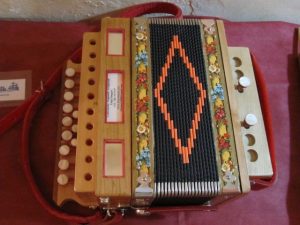
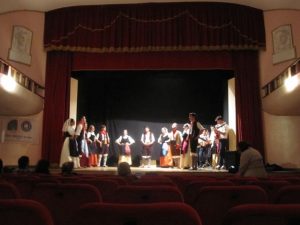
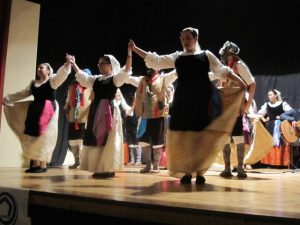
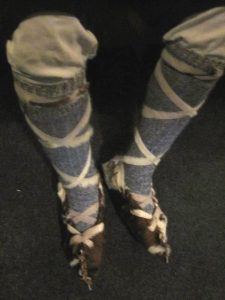
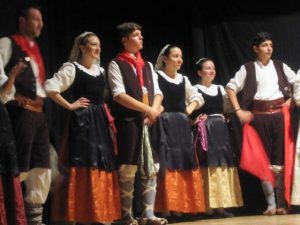
Comments 2
lovely group. interesting research about instruments, costumes , music pieces and love for traditions
Author
Yes, Luisa. It’s nice to see such a lovely, enthusiastic group of young people proud of their heritage.